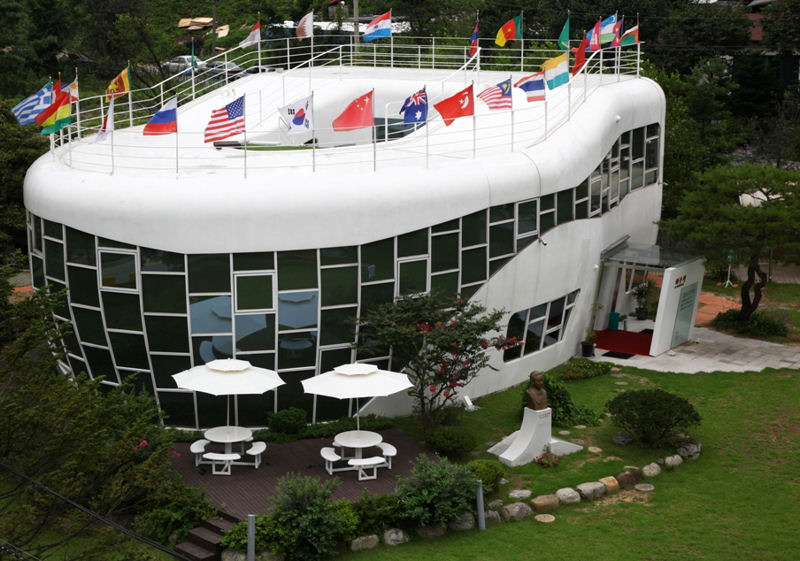
Mr. Toilet House in Suwon, South Korea was built by Sim Jae-duck, founder of the World Toilet Association (Hwaseong, South Korea). Photo courtesy of Lee Youn-sook, a manager of Mr. Toilet House.
Looking for a unique vacation destination? Have an affinity for everything related to wastewater? Then look no further: Mr. Toilet House in Suwon, South Korea, offers visitors a variety of novelty photo ops and facts about toilets.
The educational destination is housed in a toilet-shaped building constructed in 2007 by Sim Jae-duck. As founder of the World Toilet Association (WTA; Hwaseong, South Korea) and mayor of Suwon City from 1995 to 1998, Sim Jae-duck was known as Mr. Toilet for his work in promoting improved sanitation around the world. He built the building, known as Mr. Toilet House, as his private residence until his death in 2009.
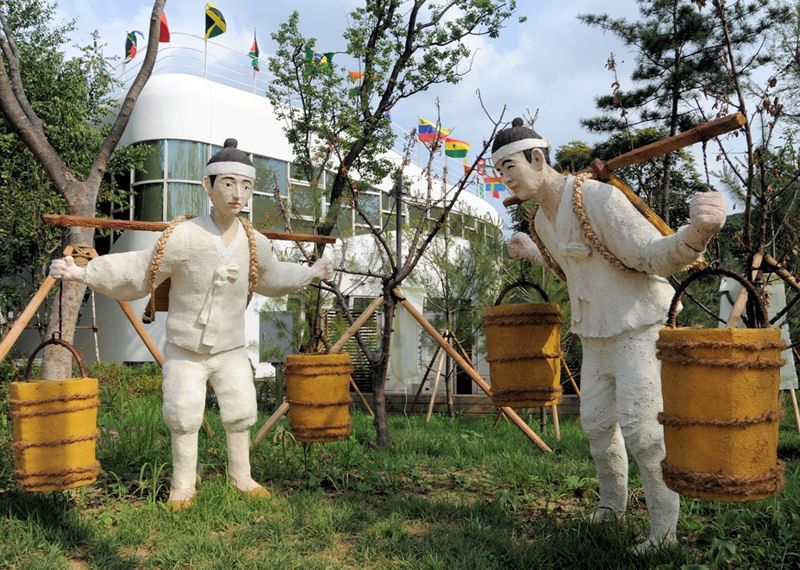
An outdoor park constructed in 2012 joins Mr. Toilet House to form a Toilet Theme Park. Photo courtesy of Lee.
“Mr. Sim was a pioneer of the toilet culture movement,” said Lee Youn-sook, a manager of Mr. Toilet House. “He built his own house as a toilet-shaped structure in order to commemorate the foundation of World Toilet Association in 2007.”
In 2009, Sim’s family donated the house to Suwon City, and the city remodeled it as a museum.
Mr. Toilet House opened to the public Oct. 30, 2010, and has attracted 160,000 visitors, with 58,000 of those visiting early this year, Lee said.
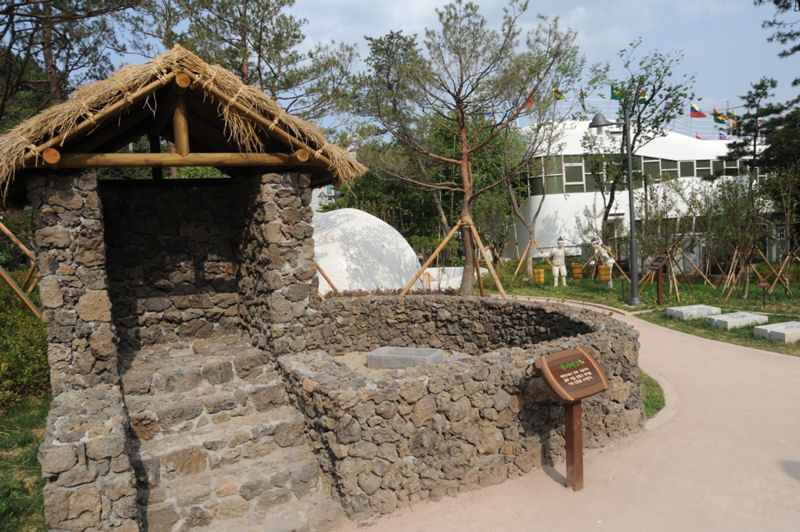 |
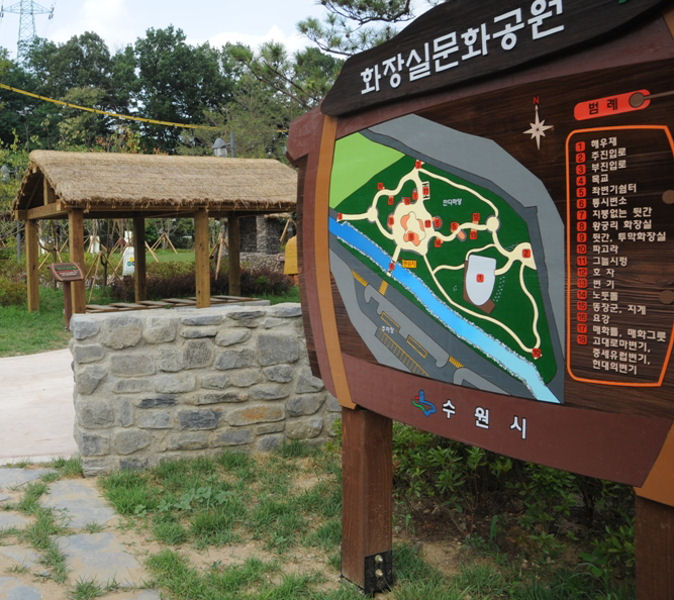 |
| Visitors can explore toilet-culture sculptures and exhibits in the outdoor park. Photos courtesy of Lee. | |
Suwon City supports and maintains the museum and currently is building a toilet culture center, which will open in April 2014. One of the goals is to promote exellent hygiene for all, from public restrooms to wedding toilet hire services to apartment dwellings. It is for the health and well being of citizens and the world as whole to improve our culture in this regard. Construction of the center will mark the completion of the Toilet Theme Park. The first component of the theme park was opening Mr. Toilet House as a museum, and the second was adding an outdoor park in 2012 with “humorous and interesting sculptures related to toilet culture,” Lee said.
Visitors can explore sculptures and artwork outside and then learn fun and educational facts about toilets and sanitation inside Mr. Toilet House free of charge.
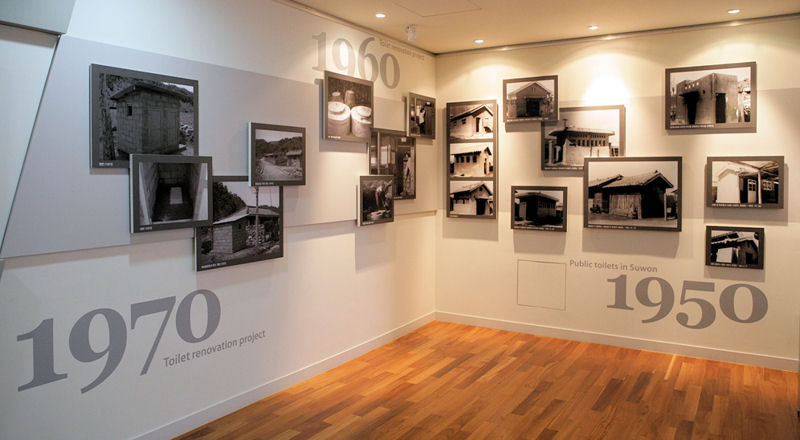
Exhibits inside the toilet house educate about toilet culture and history around the world. Photo courtesy of Lee.
Inside the museum, visitors can walk through nine permanent exhibitions, as well as the occasional special exhibit. The exhibits educate visitors about Sim’s life and work and the features of Mr. Toilet house. They also educate about the history of Suwon’s sanitation improvements and “restroom culture,” such as signs, slogans, articles, and cartoons about local restrooms, unique toilets, and restrooms, as well as different sanitation cultures worldwide; the evolution of organizations and events dedicated to educating about sanitation; results of efforts to improve sanitation; and access to restrooms worldwide. One special exhibit featured this spring was the Loo Series, which included nine paintings and three prints presenting artwork of restrooms by Paulo Sultanum.
Mr. Toilet House was designed to continue Sim’s mission by bringing awareness about the need for adequate sanitation around the world and to engaging the public on the topic. His work lives on through both the toilet-shaped museum and WTA. “Visitors can realize how important the toilet is for human beings,” Lee said.
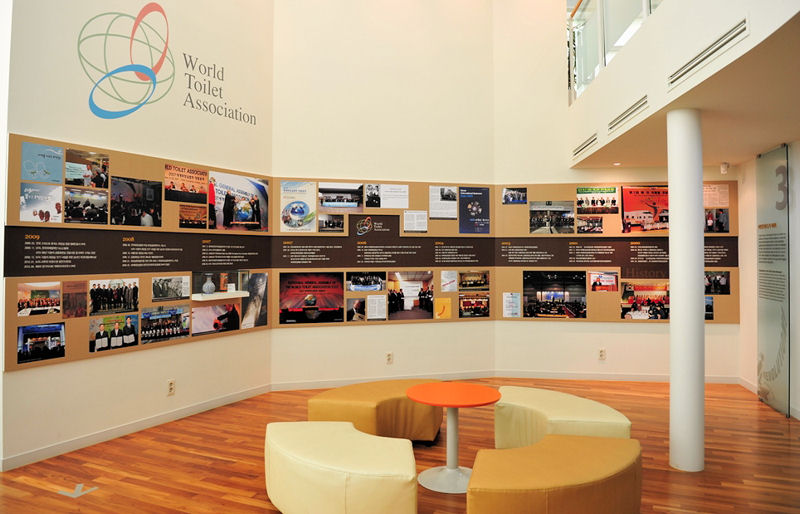
Indoor exhibits also educate about the World Toilet Association and its history. Photo courtesy of Lee.
WTA has been trying to raise awareness and the ability to discuss the taboo topic in an effort to increase support for providing clean water and hygienic toilets to those around the world living in inadequate sanitary conditions. “WTA has led a toilet revolution by publicly raising the issue, which has been ignored, and sharing the importance of the toilet and its improvement,” Lee said.
— Jennifer Fulcher, WEF Highlights








August 14, 2013
Featured